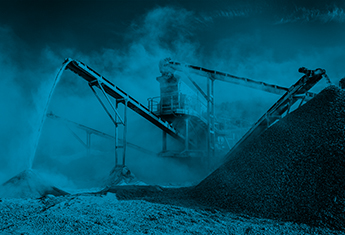Your shopping cart is empty.
New Standards and How to Choose Equipment to Advance LEED Cleaning
Posted in Health & Safety, Industry News & Trends,
What is a Healthy Building?
Today, green building is a trillion-dollar industry, according to the U.S. Green Building Council (USGBC). There’s good reason for that. In recent years, organizations have elevated the importance of health as well as environmental and social responsibility (ESG) initiatives to the C-suite level. Beyond building facilities that advance green and environmental goals, how facilities are cleaned and maintained is integral to advancing sustainability initiatives and creating healthy buildings. Taking an environmentally responsible approach to cleaning can even help organizations meet LEED certification requirements.
Moving forward, the green building movement will be centered around healthy buildings. Buildings that provide a healthy environment that improves both human and business performance. According to the Harvard T.H. Chan School of Public Health, employees are more comfortable and more productive when they work in a healthy building. Furthermore, Harvard researcher found that sick building symptoms drop 30% in healthy buildings.
The Harvard research team identified the nine key areas for healthy building indoor environments:
- Air quality
- Ventilation
- Thermal health
- Moisture
- Dust and pests
- Safety and security
- Water quality
- Noise
- Lighting and views

Healthy Buildings Intersect with LEED Certification Requirements
LEED (Leadership in Energy and Environmental Design) is a building certification program introduced in 1993 by the USGBC. Over the decades, more and more organizations pursued LEED certification to demonstrate commitment to the planet. In 2021, the USGBC announced a milestone achievement—more than one billion square feet of LEED commercial green building space was recertified under LEED.
In 2002, the USGBC added cleaning credits to LEED, paving the way for green cleaning. Among the credits to obtain LEED certification, 20% are directly related to how a building impacts human health. That makes having clean and healthy buildings a significant component of overall LEED requirements. It could even mean the difference between simply being LEED certified and attaining coveted higher-level LEED status.
There are recent changes that the USGBC made to the LEED cleaning credits. It increased the points for green cleaning, enacted a new technology-based protocol for measuring surface contamination, approved UV-C devices as a means of surface disinfection and defined green disinfectants as being formulated to the standards of the Environmental Protection Agency’s (EPAs) Design for the Environment.
Pathway to Cleaner, Safer, Healthier Building Solutions
There are a variety of ways for organizations to improve their environmental stewardship and create healthy buildings. Cleaning with more sustainable technologies and equipment is chief among them. This can help organizations conserve resources, reduce the use of detergents, increase safety, protect air quality and reduce noise.

Technologies like our ec-H20 NanoClean®, which converts water into nanobubbles, use less water going in and reduce waste-water going out by up to 70%. This technology electrically convers water in an innovative, detergent-free solution that clean effectively, reduces costs and lowers environmental impact. The nano-scale bubbles break down dirt, food greases and other challenging soils, then suspends them in the cleaning water where the squeegee can easily remove soil from the floor.
The ec-H20 NanoClean technology also reduces the need to use chemical detergents. Scrubbers equipped with this technology can scrub up to three times longer with a single tank of water—while using 70% less water than conventional floor scrubbing methods. This technology also helps organizations reduce the risk of slip-and-fall accidents. It’s certified by the National Floor Safety Institute (NFSI) to increase floor safety.
Machines Matter Too for Healthy Buildings
Protecting indoor air quality and reducing noise levels when cleaning comes down to the machines an organization chooses. Machines with excellent dust control system can filter down to 0.3 microns at 99% efficiency—improving a building’s indoor air. Likewise, cleaning machines that run as quiet as 70 dBA allow staff to clean day or night without disrupting employee productivity and business.
Cleaning for the Future
There are many tangible benefits for cleaning with more sustainable technologies and equipment. The green building movement has progressed to focus on healthy buildings that provide a clean, productive and prosperous work environment. There’s also growing evidence that healthy buildings improve existing employee performance and can be a distinctive draw when recruiting new employees. LEED cleaning has also evolved to strengthen standards for green cleaning and organizations pursuing LEED or looking to improve their LEED designation can leverage sustainable cleaning practices to help achieve their goals.

From scrubbing technologies that use no detergents and less water to cleaning machines that improve air quality and reduce noise, organizations have the tools at their disposal to advance environmental stewardship, create healthy buildings and meet LEED building requirements.
Contact us for additional information about Tennant’s environmental stewardship and sustainability advancing cleaning solutions.
RELATED LINKS
Ready to take your cleaning to the next level?
Whether you are requesting a product demonstration or a quote, ordering parts, or making a service appointment, you've come to the right place. Tennant professional representatives are ready with answers to your questions, and we look forward to showing you how much we appreciate your business.



